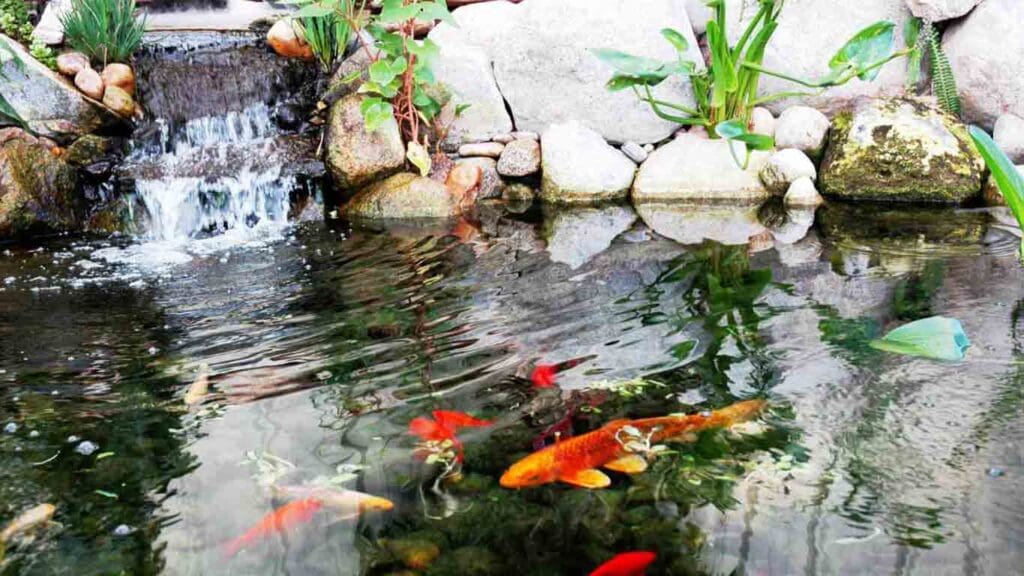Building a koi pond with a waterfall is a great way to add a stunning water feature to your backyard. Koi ponds are tranquil and beautiful, and adding a waterfall can make it even more mesmerizing. If you’re considering building your own koi pond with a waterfall, there are a few things you should know to ensure it’s done correctly. A helpful resource for this project is a guide titled ‘How to Build a Koi Pond with a Waterfall,’ which provides detailed instructions and tips.
Firstly, you’ll need to choose the right location for your pond. Koi ponds should be located in an area that receives partial sunlight to provide shade for the fish. You’ll also need to ensure that the location is level and has good drainage. Once you’ve selected the perfect spot, you’ll need to gather the necessary materials and tools, including a pond liner, pump, filter, and rocks. With these items in hand, you can begin the process of building your koi pond with a waterfall.
How to Build a Koi Pond with a Waterfall:
Building a koi pond with a waterfall is a great way to add a beautiful and relaxing feature to your backyard. Here are some key takeaways to keep in mind as you plan and construct your pond:
By following these key takeaways, you can build a beautiful and functional koi pond with a waterfall that you can enjoy for years to come.
Understanding Koi Ponds and Waterfalls
If you are considering building a koi pond with a waterfall, it is important to understand the basics of these features. Here are some key points to keep in mind:
Koi Ponds
A koi pond is a specialized type of water feature designed to house koi fish. Koi are a type of carp that can grow quite large, so koi ponds need to be deep enough and large enough to accommodate them. Here are some things to consider when building a koi pond:
- Size: A koi pond should be at least 3 feet deep and have a surface area of at least 100 square feet. If you plan to keep a large number of koi or want them to grow to their full potential, you may need a larger pond.
- Filtration: Koi produce a lot of waste, so it is important to have a good filtration system in place to keep the water clean and healthy for the fish.
- Aeration: Koi need oxygen to survive, so it is important to have some form of aeration in the pond, such as a waterfall or fountain.
- Plants: While plants can help keep the water clean and provide shade for the fish, koi tend to eat them. If you want to include plants in your koi pond, choose ones that are hardy and can withstand being nibbled on.
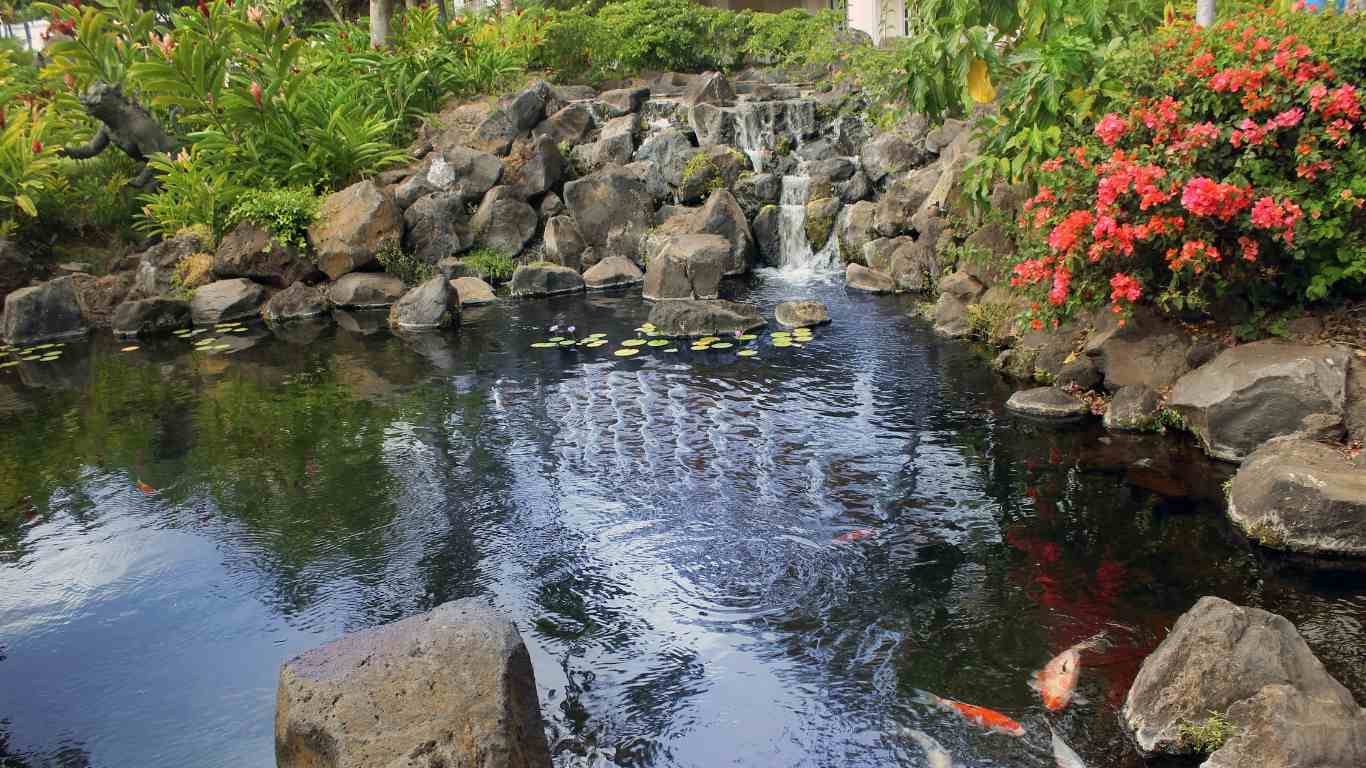

Waterfalls
A waterfall can be a beautiful addition to a koi pond, but it also serves a practical purpose. The movement of the water helps to oxygenate the pond and keep it healthy for the fish. Here are some things to consider when building a waterfall:
- Size: The size of your waterfall will depend on the size of your pond and the look you are going for. A smaller pond may only need a small waterfall, while a larger pond may benefit from a larger, multi-tiered waterfall.
- Materials: You can build a waterfall out of a variety of materials, including rocks, concrete blocks, or even PVC pipe. Choose materials that will blend in with the surrounding landscape and create a natural-looking waterfall.
- Placement: When deciding where to place your waterfall, consider how it will affect the overall look of your pond. You may want to place it near a seating area or viewing spot so that you can enjoy the sound and sight of the waterfall.
By understanding the basics of koi ponds and waterfalls, you can create a beautiful and functional water feature that will provide years of enjoyment.
Site Selection for Koi Pond
Before you start building your koi pond with a waterfall, you need to carefully choose the site. The site selection is crucial for the success of your project, and it can make the difference between a beautiful and healthy pond and a problematic one. Here are some important factors to consider when selecting the site for your koi pond:
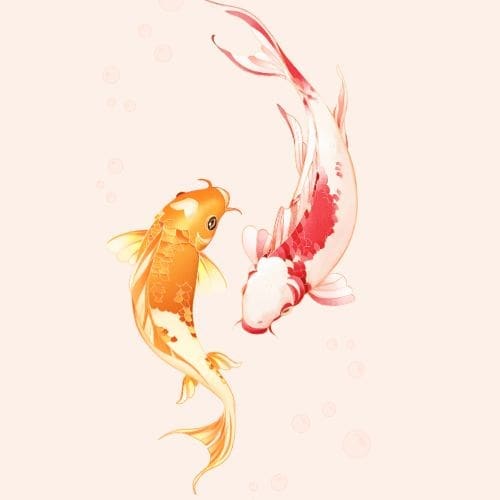

Get the Information You Need!
Join Us and Ask an Expert
Location
Choose a location that is visible and accessible from your home, but also consider the amount of sunlight and shade the area receives. Koi need sunlight to thrive, but too much direct sunlight can cause algae blooms and other water quality issues. Therefore, it is best to choose a spot that receives some shade during the hottest part of the day.
Size
The size of your pond will depend on the number of koi you plan to keep. As a general rule, you need at least 1000 gallons of water for every koi. However, larger ponds are easier to maintain and provide a more natural habitat for your fish. Aim for a pond that is at least 8 feet long, 6 feet wide, and 4 feet deep.
Slope
The slope of the land where you plan to build your pond is also important. Avoid areas with a steep slope or where water runoff can cause erosion or flooding. Ideally, the site should be level or have a gentle slope that allows for easy drainage.
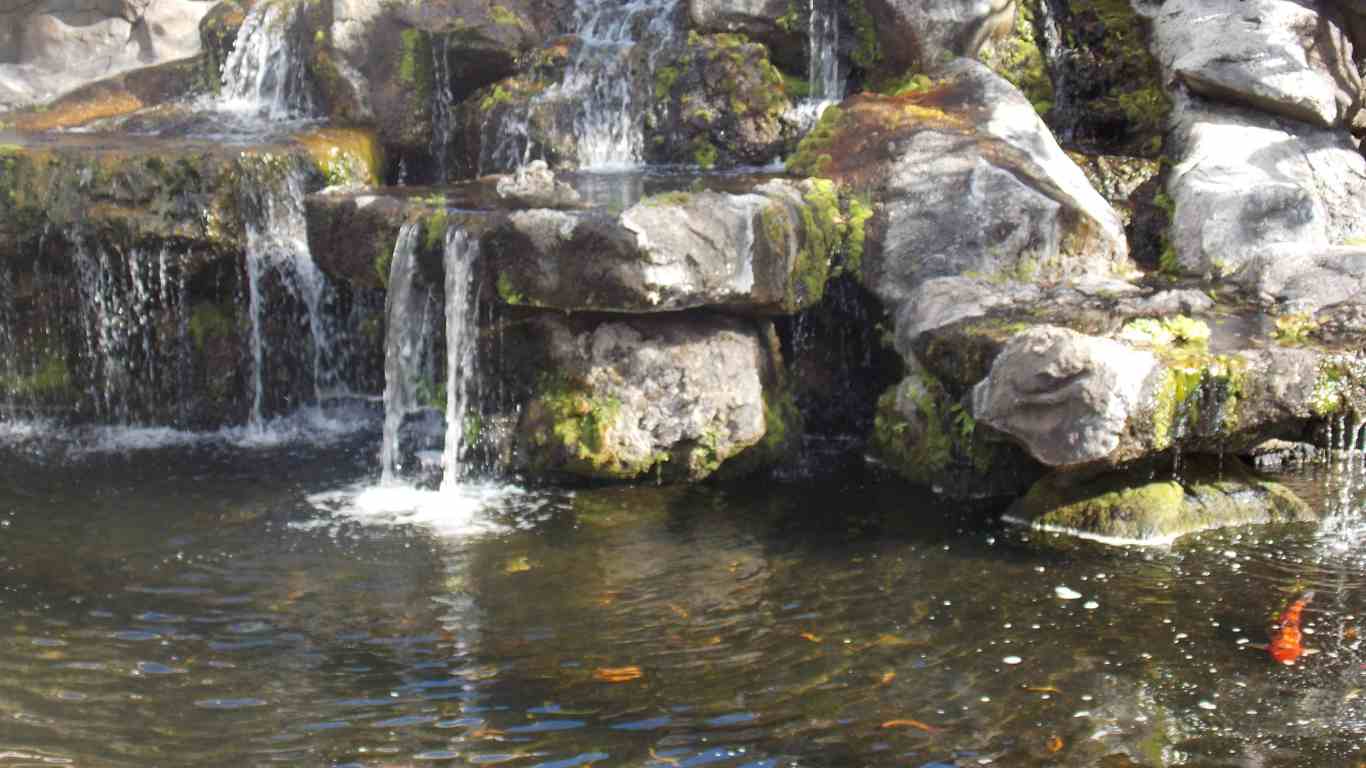

Designing the Koi Pond and Waterfall
Consider the proximity of utilities such as water, electricity, and drainage. You will need a reliable source of water to fill and maintain your pond, as well as electricity to power the pump and filtration system. Proper drainage is also essential to prevent flooding and water damage.
Accessibility
Finally, consider the accessibility of the site. You will need to transport materials and equipment to the site, and you will also need to perform regular maintenance tasks such as cleaning and feeding your fish. Choose a location that is easily accessible and allows for easy movement around the pond.
By carefully selecting the site for your koi pond, you can ensure that your fish will have a healthy and beautiful home. Take the time to evaluate different locations and consider all the factors before starting your project.
When it comes to designing your koi pond and waterfall, there are a few key factors to consider. In this section, we’ll cover how to determine the size of your pond, choose the right shape, and plan the perfect waterfall.
Determining the Size
The size of your koi pond will depend on a few different factors, including the number of fish you plan to keep and the available space in your yard. As a general rule of thumb, you should aim for a pond that is at least 3 feet deep and has a surface area of at least 100 square feet. This will provide enough space for your fish to swim and thrive.
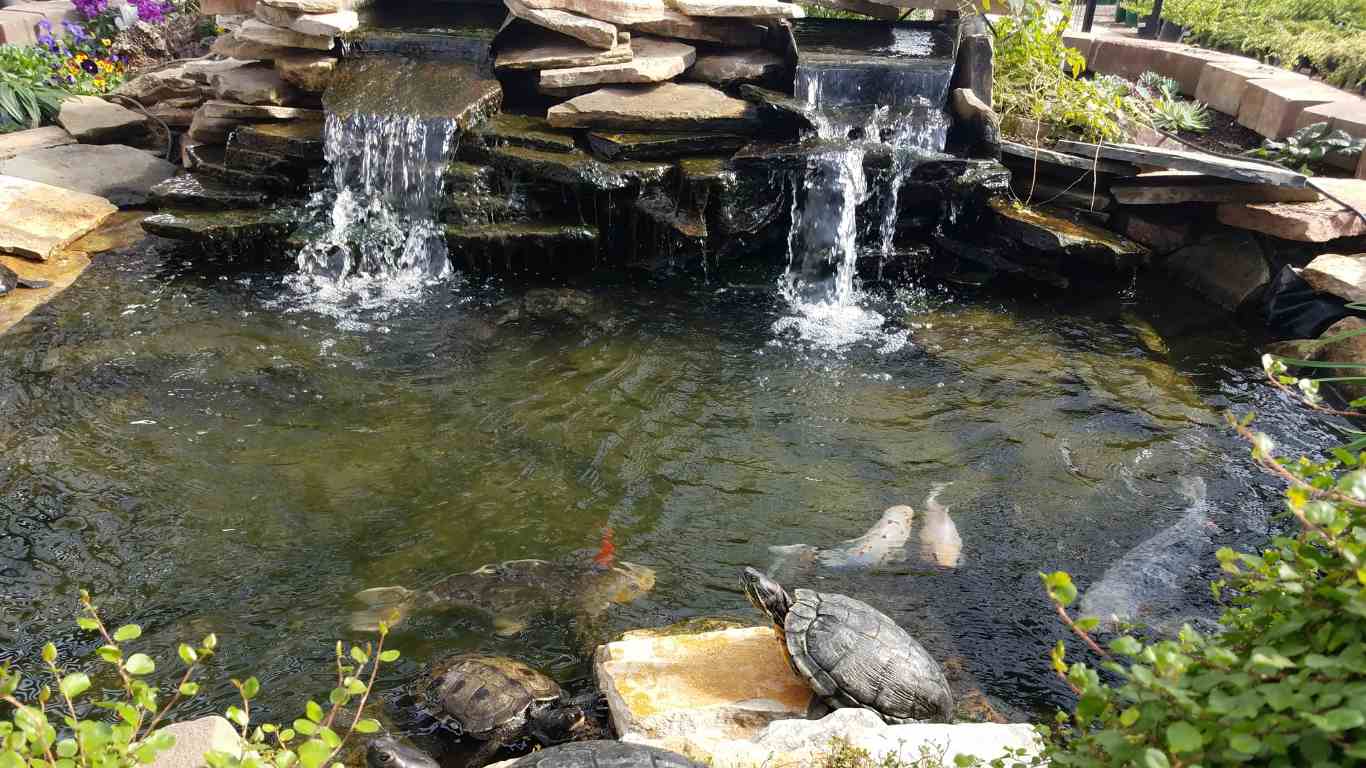

Choosing the Shape
The shape of your pond is another important consideration. While rectangular and oval shapes are common, you can also get creative with freeform designs. Keep in mind that the shape of your pond will impact the flow of water and the overall aesthetic of your backyard. Take some time to consider what shape will work best for your space and your personal preferences.
Planning the Waterfall
Adding a waterfall to your koi pond can create a beautiful focal point and help to oxygenate the water. When planning your waterfall, consider the height and width of the feature, as well as the materials you’ll use to construct it. You can opt for a natural look with rocks and boulders or go for a more modern design with concrete or metal.
Overall, designing your koi pond and waterfall requires careful planning and consideration. By determining the size of your pond, choosing the right shape, and planning the perfect waterfall, you can create a stunning and functional addition to your backyard.
Materials Needed
For the Pond
Building a koi pond requires a few essential materials. Here are the things you will need to create a beautiful and functional pond:
- Pond liner: Choose a quality, durable liner that is large enough to hold the amount of water you need for your pond. The liner should be thick enough to withstand punctures and tears.
- Pond pump: A pump is necessary to circulate the water in your pond and keep it clean. Choose a pump that is appropriate for the size of your pond.
- Pond filter: A filter helps to remove debris and keep the water in your pond clear. Choose a filter that is appropriate for the size of your pond.
- Koi fish: Koi fish are the stars of your pond. Choose healthy fish from a reputable dealer.
- Pond plants: Plants provide oxygen and help to filter the water in your pond. Choose plants that are appropriate for your climate and the size of your pond.
- Pond skimmer: A skimmer helps to remove debris from the surface of your pond. Choose a skimmer that is appropriate for the size of your pond.
- Pond netting: Netting helps to protect your fish from predators and keeps leaves and debris out of your pond.
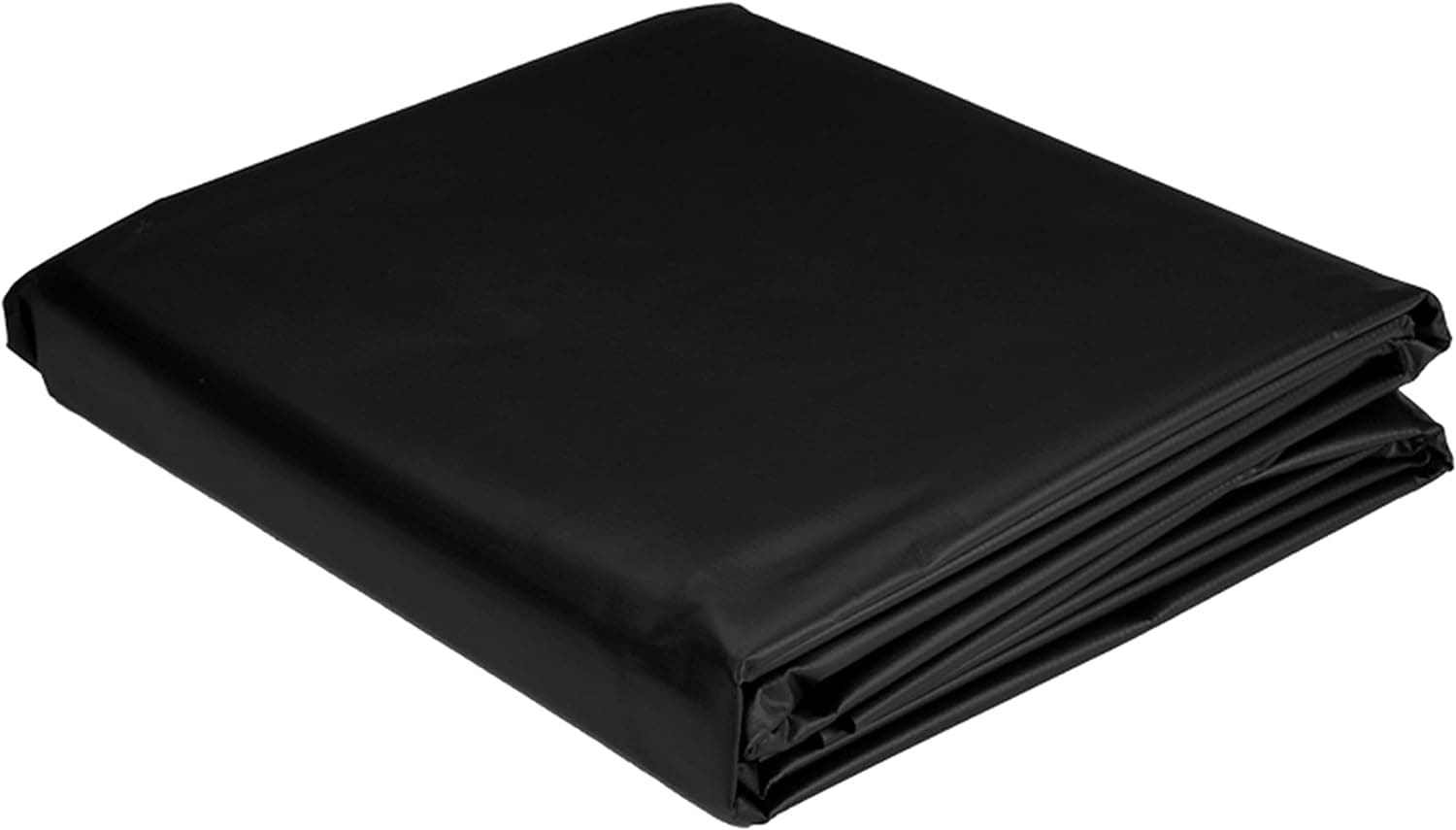

Koi Pond Skins Pond Liner
For the Waterfall
A waterfall adds beauty and sound to your koi pond. Here are the things you will need to create a waterfall:
- Waterfall box: A waterfall box is necessary to create a pool of water at the top of your waterfall. Choose a box that is appropriate for the size of your pond.
- Waterfall pump: A pump is necessary to circulate the water in your waterfall. Choose a pump that is appropriate for the size of your waterfall.
- Waterfall spillway: A spillway is necessary to create a smooth flow of water down your waterfall. Choose a spillway that is appropriate for the size of your waterfall.
- PVC pipe and fittings: PVC pipe and fittings are necessary to connect your waterfall box, pump, and spillway. Choose pipe and fittings that are appropriate for the size of your waterfall.
- Rocks: Rocks provide a natural look to your waterfall. Choose rocks that are appropriate for the size of your waterfall.
Building the Koi Pond
Building a koi pond with a waterfall can be a fun and rewarding project. Here are the three main steps to building your pond: excavating the site, installing the pond liner, and adding the filtration system.
Excavating the Site
The first step in building your koi pond is to excavate the site. You’ll want to choose a location that gets plenty of sunlight and is away from any trees with deep roots or electrical lines. Once you’ve chosen your location, use a shovel or excavator to dig out the area for your pond. The depth of your pond will depend on the size of your koi and the climate in your area. A good rule of thumb is to make your pond at least 3 feet deep.
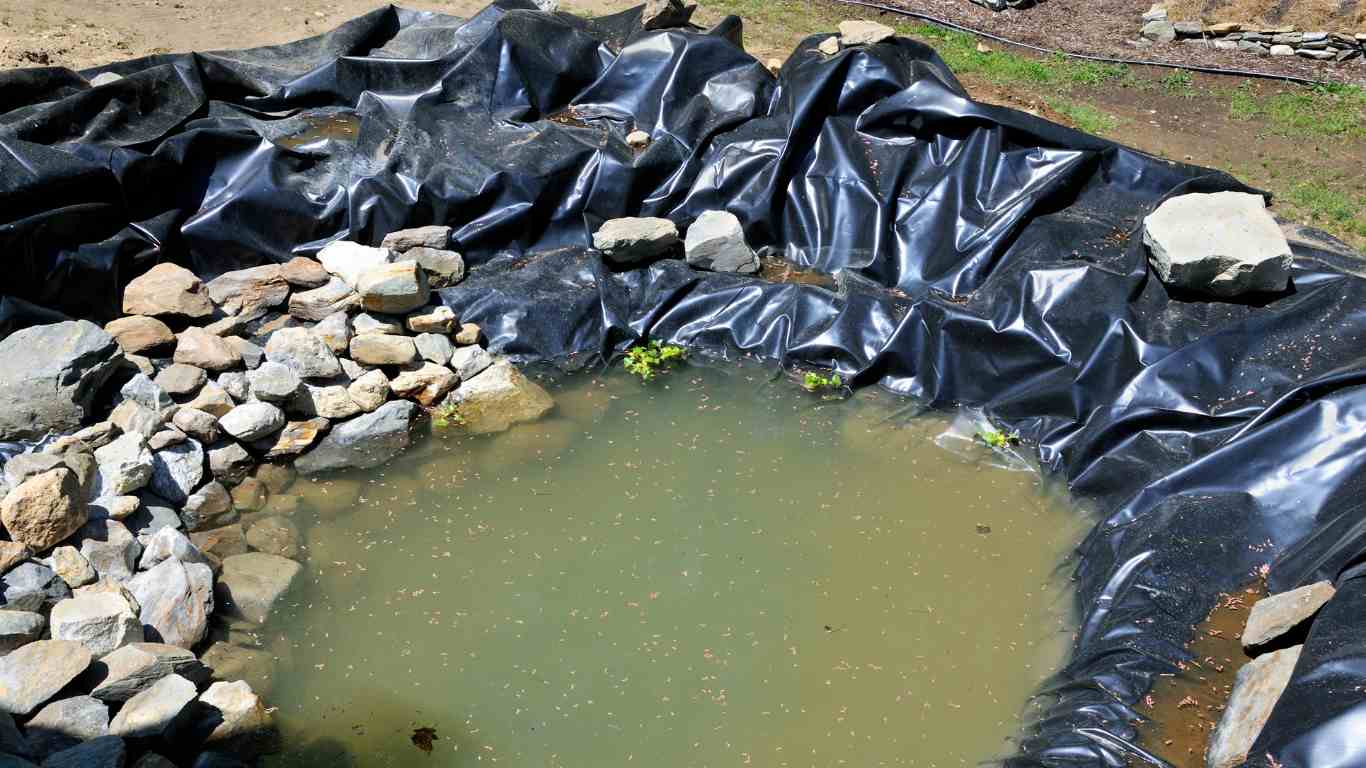

Installing the Pond Liner
Once you’ve excavated the site, it’s time to install the pond liner. You’ll want to choose a high-quality liner that is durable and resistant to punctures. Lay the liner over the excavation site and smooth out any wrinkles. Be sure to leave enough excess liner around the edges to create a secure seal.
Adding the Filtration System
The final step in building your koi pond is to add the filtration system. A good filtration system will keep your pond clean and healthy for your koi. There are several types of filtration systems available, including biological, mechanical, and chemical. You can choose the type that best fits your needs and budget.
In conclusion, building a koi pond with a waterfall can be a fun and rewarding project. By following these three main steps, you can create a beautiful and healthy environment for your koi to thrive.
Constructing the Waterfall
When building a koi pond, constructing a waterfall is an excellent way to enhance its beauty and create a soothing sound. Here are the steps to construct a waterfall for your koi pond.
Setting the Foundation
The first step in constructing a waterfall is to set the foundation. You can use dirt dug out from your pond or build steps out of cement, concrete blocks, or large rocks. Whichever option you choose, make sure the foundation is sturdy and level.


Arranging the Stones
Once the foundation is set, arrange the stones to create the waterfall. Be creative and use different sizes and shapes of stones to create a natural-looking waterfall. Make sure the stones are securely placed to prevent them from falling into the pond.
Installing the Pump
The final step in constructing a waterfall is to install the pump. The pump is responsible for circulating the water from the pond to the waterfall. Make sure to choose a pump that is appropriate for the size of your pond and waterfall. Install the pump at the bottom of the pond and connect it to the waterfall using tubing.
In conclusion, constructing a waterfall for your koi pond is a great way to enhance its beauty and create a relaxing atmosphere. By following these steps, you can construct a beautiful waterfall that your koi fish will love.
Adding the Koi Fish
Once your koi pond is ready, it’s time to add the koi fish. Here are some steps to follow:
- Acclimate the Fish: Place the koi in bags containing the pond water. Let them acclimate for about 15 minutes. Place the bags in the pond water and let the fish swim out. Add just a few fish to the pond at a time, no more than five or six in the 5- to 6-inch size range. This lets your biological filters adapt to the koi.
- Feed the Fish: Once the koi are in the pond, feed them a high-quality koi food. Feed them small amounts of food several times a day. Do not overfeed the fish, as this can lead to health problems.
- Monitor Water Quality: Keep an eye on the water quality in the pond. Test the water regularly to ensure that the levels of ammonia, nitrite, and nitrate are within safe limits. If the levels are too high, perform a partial water change.
- Maintain the Pond: Regularly maintain the pond to keep it clean and healthy for the koi. Remove any debris from the pond, and clean the filters and skimmers as needed.
- Enjoy Your Koi: With proper care and maintenance, your koi will thrive in their new home. Sit back, relax, and enjoy the beauty of your koi pond with a waterfall.
Remember, adding koi to your pond is a long-term commitment. Koi can live for decades, so be prepared to care for them for many years to come. With the right care, your koi will bring you joy and beauty for many years.


Get Advice from an Expert – Join Our Koi Fish Newsletter
Maintaining the Koi Pond and Waterfall
Maintaining your koi pond and waterfall is essential to keep it healthy and attractive. Here are some tips to help you maintain your koi pond and waterfall:
Water Quality
Maintaining good water quality is crucial for the health of your koi fish. Test the water regularly for pH, ammonia, nitrite, and nitrate levels. Keep the pH level between 7.0 and 8.0 and the ammonia and nitrite levels at zero. Nitrate levels should be kept below 40 ppm. You can use a water testing kit to check the water quality.
Filtration System
A good filtration system is essential to keep the water clean and clear. Install a biological filter that provides mechanical and biological filtration. A mechanical filter removes debris and waste, while a biological filter converts harmful ammonia and nitrite into less harmful nitrate. Clean the filter regularly to maintain its efficiency.
Water Changes
Regular water changes are essential to remove waste and debris from the water. Change 10-20% of the water every week to keep the water fresh and clean. Use a dechlorinator to remove chlorine from tap water before adding it to the pond.
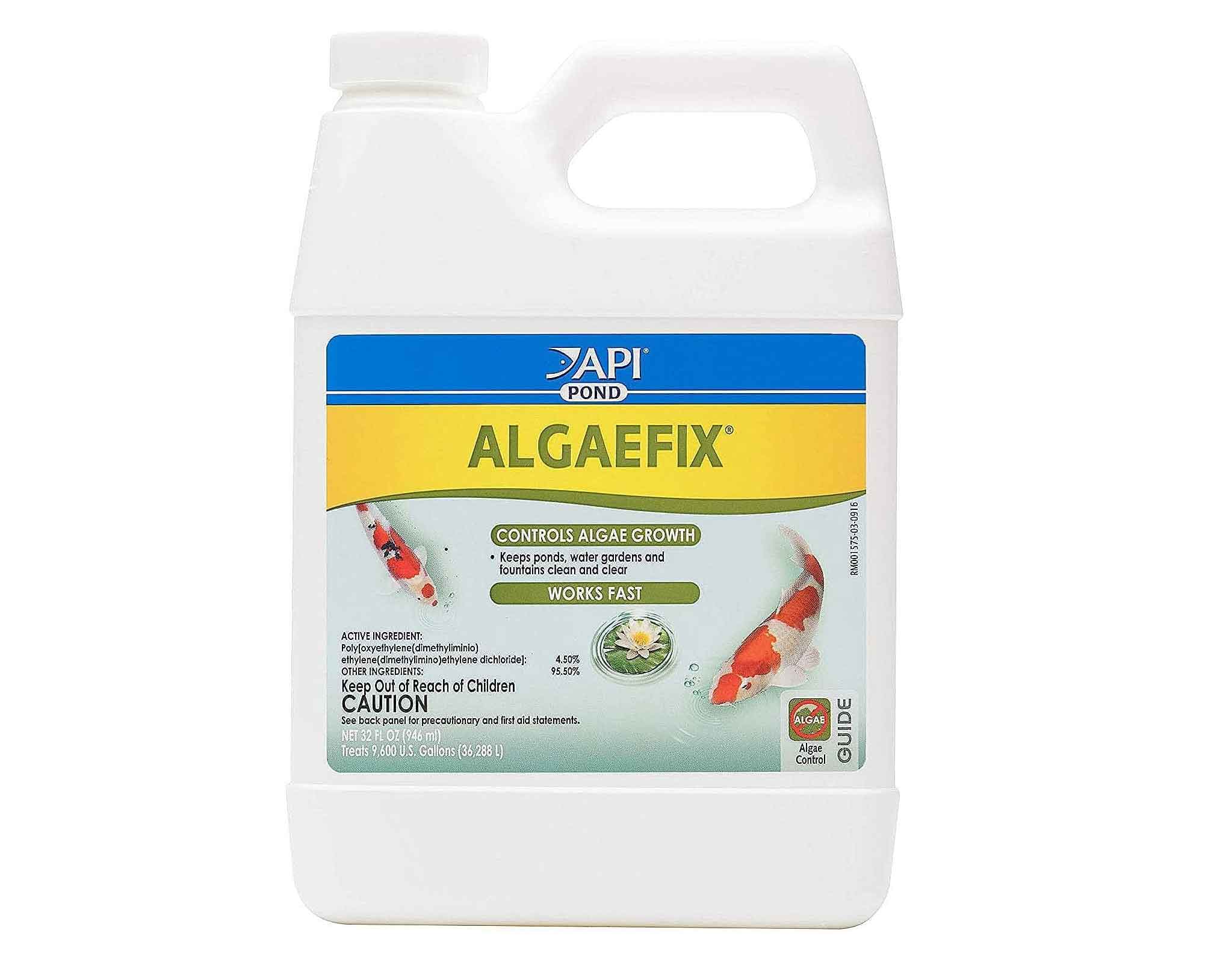

Koi Pond Algae Control 32-Ounce Bottle
Algae Control
Algae can make the water green and unsightly. Use an algaecide or a UV clarifier to control algae growth. You can also add plants such as water lilies and submerged plants to compete with algae for nutrients.
Winter Maintenance
In winter, the pond may freeze over, which can harm your fish. Install a pond heater or aerator to keep a hole in the ice and allow gases to escape. Stop feeding the fish when the water temperature drops below 50°F to prevent digestive problems.
By following these tips, you can maintain a healthy and attractive koi pond and waterfall.
Troubleshooting Common Issues
Building a koi pond with a waterfall can be a rewarding experience, but sometimes things don’t go as planned. Here are some common issues you might encounter and how to troubleshoot them.
Low Water Level
If you notice that the water level in your koi pond or waterfall is low, it could be due to evaporation or a leak. First, check the liner for any visible tears or holes. If you can’t find any, fill the pond or waterfall up and mark the edge of where it was when you filled it up. Check it 24-48 hours after filling it to see if the water is still at the same level. If it is, then it’s likely just evaporation. If it’s lower, then you may have a leak that needs to be repaired.
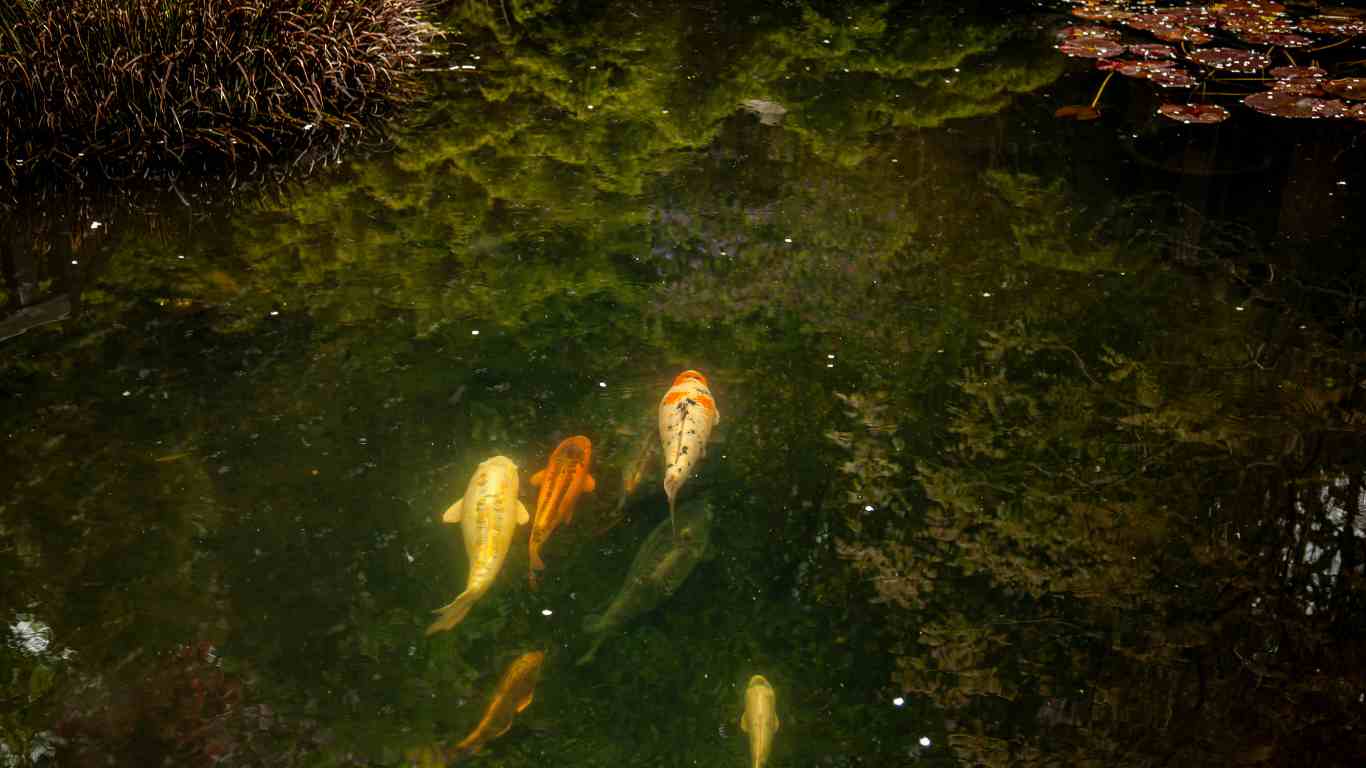

Poor Water Quality
Poor water quality can lead to sick fish and unsightly algae growth. One common cause of poor water quality is overfeeding. Make sure you’re only feeding your fish what they can eat in a few minutes, and remove any uneaten food. Another cause could be a lack of filtration. Make sure you have a proper filtration system in place and that it’s working correctly. Test the water regularly for pH, ammonia, and nitrite levels, and make adjustments as necessary.
Pump Not Working
If your pump isn’t working, there could be a few different causes. First, check to make sure the power source is working and that the pump is plugged in. If that’s not the issue, check for any clogs in the pump or tubing. Clean out any debris and try again. If it’s still not working, it could be a problem with the impeller or motor, and you may need to replace the pump.
Algae Growth
Algae growth is a common issue in koi ponds, especially if there’s too much sunlight or nutrients in the water. One way to prevent algae growth is to limit the amount of sunlight that reaches the water by adding shade or using a UV clarifier. Another way is to limit the amount of nutrients in the water by reducing the amount of fish waste and uneaten food. You can also add plants to the pond, which will compete with the algae for nutrients and help keep the water clean.
By troubleshooting common issues, you can ensure that your koi pond with a waterfall stays healthy and beautiful for years to come.


JOIN OUR COMMUNITY AND GET A FREE E-BOOK
Final Remarks
Congratulations! You have successfully followed the guide “How to Build a Koi Pond with a Waterfall.” With the right tools and materials, building a koi pond with a waterfall can be a fun and rewarding experience.
Remember to follow the proper steps in building a koi pond, such as choosing the right location, digging the pond, installing the liner, and adding the necessary equipment such as filters and pumps. Adding a waterfall not only adds to the aesthetic appeal of your pond but also helps improve the pond’s conditions by increasing dissolved oxygen levels and maintaining pond homeostasis.
Maintaining your koi pond is also important. Regularly checking the water quality, cleaning the filters, and feeding the fish appropriately are essential in keeping your koi healthy and happy.
Lastly, never forget to enjoy the beauty and serenity of your new koi pond with a waterfall. Sit back, relax, and watch your fish swim and play in their new home.
Frequently Asked Questions
What are some small koi pond waterfall ideas?
If you have a small koi pond, you can still add a beautiful waterfall to enhance its beauty. You can use a small rock formation to create a miniature waterfall or use a pre-made waterfall kit that is specifically designed for small ponds.
How do you build a pond waterfall with rocks?
Building a pond waterfall with rocks requires careful planning and execution. You will need to choose the right size and shape of rocks, and arrange them in a way that creates a natural-looking waterfall. You will also need to ensure that the rocks are securely in place and that the water flows smoothly over them.
Can you provide step-by-step instructions for building a pond waterfall?
Yes, here are the basic steps for building a pond waterfall:
- Plan and design your waterfall.
- Dig a trench for the waterfall.
- Install the pond liner and underlayment.
- Add rocks and boulders to create the waterfall.
- Install the waterfall pump and tubing.
- Test the water flow and adjust as needed.
What are some benefits of having a fountain in a koi pond?
Adding a fountain to your koi pond can provide several benefits. It can help to oxygenate the water, which is important for the health of your koi. It can also create a soothing sound and add visual interest to your pond.
What is a pond waterfall spillway and how does it work?
A pond waterfall spillway is a device that creates a smooth flow of water over rocks and boulders to create a natural-looking waterfall. It works by channeling the water from the pond pump through a spillway, which distributes the water evenly over the rocks.
How do you properly dig a koi pond?
To properly dig a koi pond, you will need to choose a location that is level and has good drainage. You will then need to mark out the shape of the pond and use a shovel or excavator to dig out the soil. It is important to create a shelf around the edge of the pond to allow for plants and other features. You should also ensure that the pond is deep enough to provide adequate space for your koi to swim and thrive.
 1 (509) 228-8646
1 (509) 228-8646


